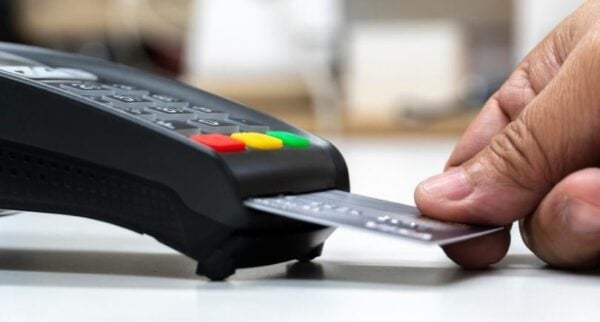Linda Simpson, professor of financial literacy at Eastern Illinois University, advises, “Start working on your credit before you actually need it.”
Without an established credit history, you likely won’t be considered a trustworthy borrower. But once you are, more premium credit products, lower interest rates and additional borrowing opportunities should become available to you.
To know how to improve your credit score, you first need to understand how to build your credit history. In general, how you handle loans and credit cards appears on your consumer credit reports and that information is then used to determine your credit score, which is a number the scoring company produces as an indication of your creditworthiness. As the data on your file changes with your activity, so does your credit score.
How long does it take to establish credit?
That depends on the scoring company. You’ll get a FICO® Score after at least one account is on your credit file for six months, but a VantageScore can be created after using an account for a month or two. The scores for both systems range from 300 to 850, with higher numbers being preferable. Though your score may start out low, it should rise when you use credit products responsibly over time.
When you use installment loans and credit cards, most lenders will furnish the credit reporting agencies – TransUnion, Experian and Equifax – with your account activity. Details about when you applied, the original loan amount or credit limit, your current balance and your monthly payment pattern will all be on your credit file.
It’s important to note, though, that credit scores are not in and of themselves a credit history; instead, your credit history informs your credit score. People with high credit scores can have relatively short credit histories and, likewise, people with very long credit histories can have terrible scores. It comes down to what you’ve done with your credit throughout that history.
Credit scores are numerical representations of the data that appears on your credit files. Instead of having to read all the line items on the report, lenders can rely on scores so they can make quick, objective decisions about whether a person is a reliable loan risk.
>>Learn more about the differences between the two credit score models, VantageScore and FICO.
The importance of credit scores
Higher credit scores usually result in better terms on core consumer items such as mortgages, auto loans, and credit cards, so developing high scores will likely be advantageous.
“Credit scores have become so influential in the lives of most consumers that tens of millions are severely disadvantaged by their lack of knowledge about these scores,” says Stephen Brobeck, Consumer Federation of America senior fellow. “Low credit scores will often cost car buyers more than $5,000 in additional finance charges and cost home purchasers tens of thousands of dollars in additional mortgage loan costs. And low scores are likely to limit consumer access to, and increase the cost of, services such as cell phone service, electric service and rental housing.”
Poor to exceptional credit scores by the numbers, according to the credit scoring model FICO:
- 300 – 579 is poor credit
- 580 – 669 is fair credit
- 670 – 739 is good credit
- 740 – 799 is very good credit
- 800 – 850 is exceptional credit
How credit scores are calculated
There are variations with the way FICO and VantageScores are computed, but the same basic rules apply. From most to least weighty:
- Payment history. “On-time payments are the most important factor in developing good credit,” says Kevin Gallegos, senior vice president at Freedom Financial Network in Phoenix. ”Begin immediately to pay every bill on time, every time. Paying bills on time for as little as one month can raise a modest credit score by 20 points.”
- Credit utilization. The less you own on revolving credit instruments (credit cards and lines of credit) the better. Most experts advise keeping credit card balances below 30% of the available balance. So if you have a $10,000 limit across all credit cards, you’d want to keep your balance below $3,000.
- Length of credit history. Ideally you will want to keep your older credit accounts open and active. Credit score analysts invariably reward consumers with the longest credit card history on the same card.
- Credit mix and new credit. Proving you can handle different types of credit can help your scores rise. You may want to have a mix of loans, such as personal and car loans, as well as a few different credit cards. Just avoid unnecessary applications. It’s usually best to add new accounts to your credit profile slowly.
How to launch a credit history
Everyone has to start somewhere, so here’s how to build your credit with no credit history:
Get a secured credit card or student credit card
An easy way to begin is with a secured credit card. To qualify, you’d typically just need to put down a cash deposit and the credit issuer will grant you an account with a credit line equal to the security deposit. Many issuers, such as Capital One, Bank of America, and Wells Fargo offer secured cards, some with no annual fees. After six months to a year of good account management, you may be able to convert the secured card to an unsecured account, reclaiming your deposit in the process.
Another option is a student credit card. If you are enrolled in an eligible degree program, many banks (including Capital One, Citi, and Discover, among others) ease their usual underwriting restrictions and may offer you a student credit card with a relatively low credit limit. Most student cards are unsecured and available to people with no credit history, which means you can build credit before you’re officially out on your own and needing to secure your own loans, apartments and more.
Add in a retail or gas credit card
Banks that underwrite private-label credit cards tend to tolerate a little more risk, since cardholders can only run up balances at specific retailers. A couple accounts in rotation from the start can help you create a healthy credit mix while lengthening your credit history. One word of warning, the APRs on retail cards are often much higher than standard, non-retail credit cards; therefore, be sure you can pay off your balance on time every billing cycle.
Become an authorized user
Becoming an authorized used on a family member or trusted friend’s credit card account could help you if you have a limited credit history. Because you’re not responsible for paying the bills, this approach may not have a significant impact on your credit score, but if could help you benefit from the primary account holder’s payment history and available credit. Of course, this option only makes sense if the primary cardholder uses their account responsibly. If they miss a payment, this could negatively affect your efforts to improve your credit score.
“Be selective about this person and ensure that the primary cardholder has an excellent payment history and low credit card balances,” says Simpson.
Form a relationship with a local bank or credit union
Another option is to open a checking and savings account at a local bank or credit union. This way you can form a relationship that may eventually include a mortgage, car loan, and sometimes credit cards. A branch manager who is familiar with your personal history, job situation, and financial goals can help you work on qualifying for the credit products you want. While checking and savings accounts won’t help you build a credit history, it can go a ways in helping you obtain credit products with a limited history.
How to rebuild credit
Even with the best intentions you may make a credit mistake along the way or have an emergency arise that leads to a setback. For example, if you lose a job and miss a few payments on your credit card, that will be noted on your credit report. The more late payments you have, the more your credit score may decline. Furthermore, if you’re missing payments, but continue to use the card, your credit utilization is on the rise, and that can have a negative impact as well.
The good news is that you can get back on track by paying your bills by the due date. Although the delinquencies remain on your credit reports for a total of seven years and are likely to be factored into your scores, a years’ worth of on-time payments on multiple accounts can make a dramatic difference.
Simpson adds, “If the late payments occurred due to unfortunate circumstances, writing a ‘goodwill letter’ to the creditor may be an option to remove the negative mark prior to the seven year timeframe.”
In the event your credit card debt is too close to your credit limit, stop charging and concentrate on repaying. When your balance is well below the limit, your credit score should rise. You may also request a higher credit line to broaden your credit utilization ratio. If your payment history is excellent, you have a good relationship with the credit issuer, and can demonstrate that you can manage a higher credit line, you may be approved.
If delinquent accounts were sent to collections, your scores can really drop. Evidence that a third-party collection agency assumed the account will stay on your credit report for seven years. Still, a paid debt looks better than an unpaid one, so consider scraping together the funds to satisfy that debt.
So how long does it take to improve your credit score after it’s been damaged? By making perfect payments on a variety of accounts, deleting high revolving credit account balances, and dealing with collection debt, you can likely revive sagging credit scores in 12 to 24 months. Recent activity matters more than older information, so don’t delay!


